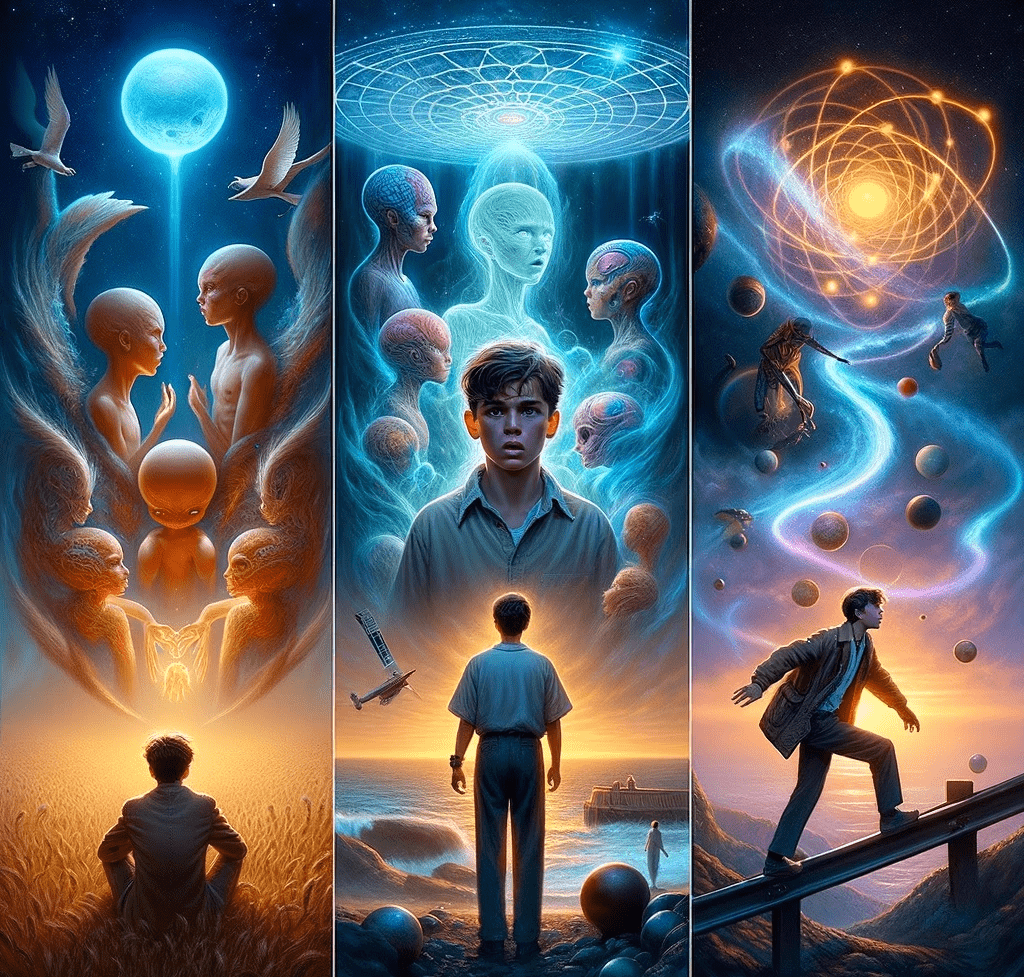Chains of the Sea

“Chains of the Sea” is a science fiction anthology published in 1973, consisting of three novellas, each written by a different author. The stories explore themes of alien contact, existential challenges, and humanity’s future. The novellas in this collection are “The Traders” by Poul Anderson, “In the Western Tradition” by George Alec Effinger, and “The Region Between” by Harlan Ellison. Each novella has its distinct setting, characters, and narrative arc.
In Anderson’s “The Traders,” the story focuses on a merchant culture that travels through space, coming into contact with alien species. The novella explores themes of cultural interaction and the inevitable tension and misunderstandings that arise between different civilizations. Anderson looks into the complexities of trade, diplomacy, and survival in an expanding universe, raising questions about human morality and the consequences of unchecked ambition.
Effinger’s “In the Western Tradition” takes a more contemplative tone, centering on a young protagonist navigating a future Earth where society has undergone significant transformation. Effinger’s story is deeply rooted in questions of identity and personal autonomy in a world where technology and politics dominate, posing thought-provoking questions about freedom, control, and the nature of humanity in a future that feels alien.
Ellison’s “The Region Between” is perhaps the most abstract and experimental of the three, blending elements of existential philosophy with science fiction. It follows the journey of a man who has died, and his consciousness continues to exist in a liminal state between life and death. The novella grapples with themes of immortality, identity, and the unknown, asking readers to consider what it means to exist and what lies beyond the boundaries of life as we understand it.
The main characters in these stories reflect different facets of human experience, whether it be the practical trader navigating the cosmos, the individual fighting against a system in a transformed Earth, or the lost soul exploring the vast unknown of the afterlife. Each character’s journey embodies broader themes of discovery, existential questioning, and the exploration of the self.
The Chains of the Sea, Gardner Dozois’ novella of the same name, is being adapted into a movie. The film rights were secured by About It Films, which aims to translate the novella’s deep exploration of alien contact, artificial intelligence, and ancient intelligence into a visual spectacle for modern audiences. The story has garnered renewed attention in recent years, especially within the UFO and Disclosure communities, thanks to endorsements from figures like Lue Elizondo, who has praised its unique take on the UFO phenomenon. The adaptation will also reflect the ongoing real-world discussions around UFO disclosure following revelations by the U.S. government.
“Chains of the Sea” is an anthology that offers a glimpse into the varied landscapes of science fiction in the early 1970s, a time when the genre was grappling with both technological advancements and deep philosophical questions. These stories reflect the era’s growing interest in themes such as interspecies communication, the limits of human understanding, and the consequences of exploration—whether it be into outer space, societal structures, or the human soul. The novella collection stands as a testament to the genre’s ability to push the boundaries of human thought and imagination.

